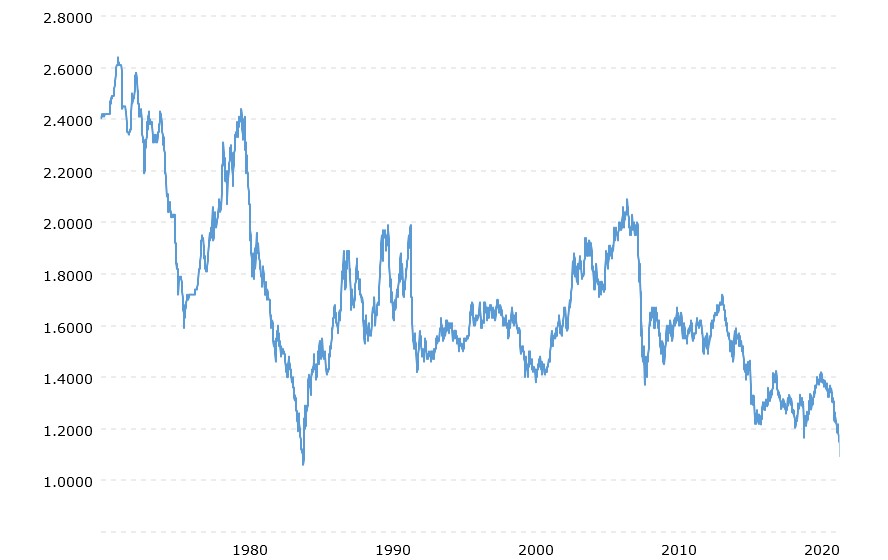There are many practical factors to consider as an execution only trader, such as the timing of trade execution and access to low latency execution services. However, one factor rarely discussed in great detail is the exchange rate, particularly the sterling dollar rate for UK investors.
While traders are often aware of what has happened in the recent past, it can be helpful to look back over decades to see exchange rate movements. For example, many believe the current weakness in sterling is creating an element of support for the FTSE 100 as the UK moves towards recession. How can this be?
Very few traders alive today would have seen the exchange rate of $2.6 to the pound back in the 1970s. Many will be aware of two dollars to the pound as recently as 2008 compared to a rate of $1.1 today. As you can see from the graph, the sterling dollar exchange rate has been highly volatile over the years.

Source:-
https://www.macrotrends.net/2549/pound-dollar-exchange-rate-historical-chart
So, we know that exchange rates have been volatile, but how might this impact an execution only trader and the type of stock they choose?
It is estimated that approximately 75% of FTSE 100 company revenues are derived from overseas operations. While many UK companies have worldwide exposure, the dollar and euro tend to be very prominent. Consequently, when FTSE 100 companies announce their results, they will convert overseas earnings/profits into sterling. This is where execution onlytraders will sit up and listen!
The 10% reduction in the sterling dollar rate equates to a 10% increase in dollar-denominated profits when converted back into sterling for company accounts. So, while it is safe to say that sterling is under pressure, companies with overseas exposure will be experiencing a degree of support from their overseas operations. So how does this work in practice?
To highlight the impact of exchange rates, we will assume that a FTSE 100 company derives 25% of revenues from the UK and 75% from the US. For simplicity, we will consider the split is the same for profits. If the UK is headed for recession, let's assume a 10% drop in UK-based profits and, on this occasion, stable US profits. Now, this is where it gets interesting!
On the average FTSE 100 company split, the US revenues/profits ratio compared to UK operations is 3 to one. While a 10% reduction in UK profits may cause investors to revisit their position and take action, don’t be hasty!
If we assume that sterling fell by 3%, due to the gearing, US profits would create a 9% increase in overall profits on currency exchange rates alone. Give or take a percentage point; a FTSE 100 company could effectively offset a worsening UK trading environment against overseas exposure.
While this simplifies the situation, as there are other issues to consider, it gives you an idea of how currency exchange rates can impact what are seen as UK-based companies in the FTSE 100.
Many execution only traders look towards highly liquid larger companies but they may not necessarily be aware of the UK/rest of the world split in revenue and profits. So, in theory, execution only traders should also consider currency movements and short to medium-term expectations. This can have a material impact on company profits, even if just because of the exchange rate at the time. So whether looking to go long or short on a particular stock or index, such as the FTSE 100, the timing of your trade execution may need to consider another factor!
It is also essential to recognise the importance of low latencyexecution services with so many interest-rate announcements and economic data being released. As an execution onlytrader, you should be aware of the timetable for the release of critical economic data. Being able to trade quickly is crucial in fast moving markets. This is where the value of low latencyexecution services comes in, something we often take for granted.
Back to News